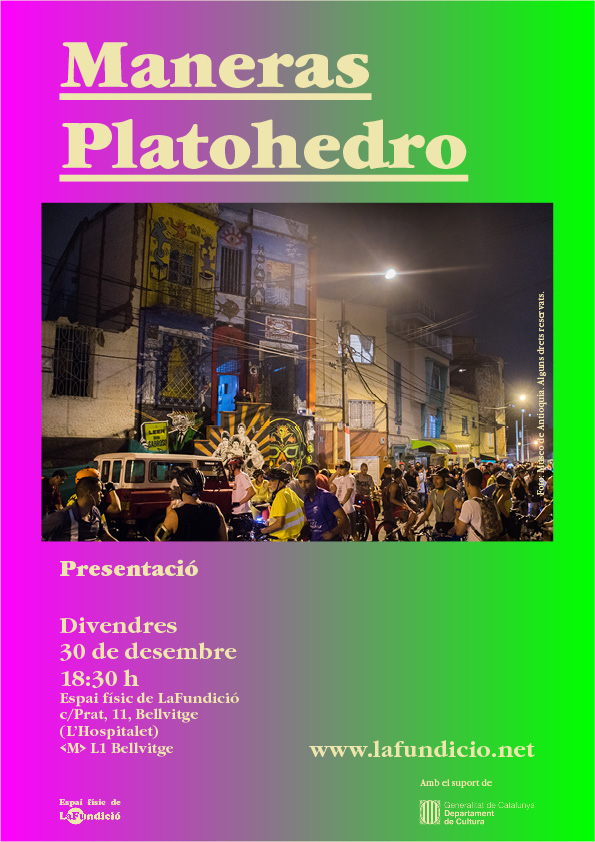


Platohedro
is a collaborative creative platform dedicated to artistic experimentation, ongoing research into free culture, and the pursuit of good living through open educational and creative processes for all.
Platohedro is a device that, since 2004, has been deployed in a house in the Buenos Aires neighborhood of Medellín (Colombia), an autonomous place in constant relationship with the public, the private, and the social, where art, technology, and communication are the means to contribute to social transformations that seek the creative well-being of people, especially young people and children, while maintaining a sustainable relationship with nature.
This is how Platohedro defines itself in the introduction to its book
Multiversos
, a publication that collects 12 years of the collective/space’s trajectory. But beyond what Platohedro is, we are interested in how it works, what kind of agencies it participates in, what its ways of doing are, its manners. And
Maneras
is precisely the title of one of the chapters of Multiversos, which we will present in the physical space of LaFundició.
Multiversos was born from the will to tell (oneself). A will that we share with Platohedro—now that LaFundició is 10 years old—and that leads us to also ask ourselves about the ways of telling (ourselves), about what modes of representation, what acts of writing and speaking are pertinent and effective when explaining the evolution of collectives and spaces like these.
During the presentation we will project several videos that document Platohedro’s work and that you can see on their Vimeo channel: https://vimeo.com/platohedro
One of the reasons for organizing this presentation arises from an interest in practices, knowledge, and discourses of a cultural, social, and political nature that are produced in the “peripheries.” Given that the notions of centrality and periphery are, of course, relative, for us, located in the “periphery” of a European “metropolis” like
We’re still here, we’ll wait for you to finish the year chatting about all these things and having a snack in the physical space of LaFundició.